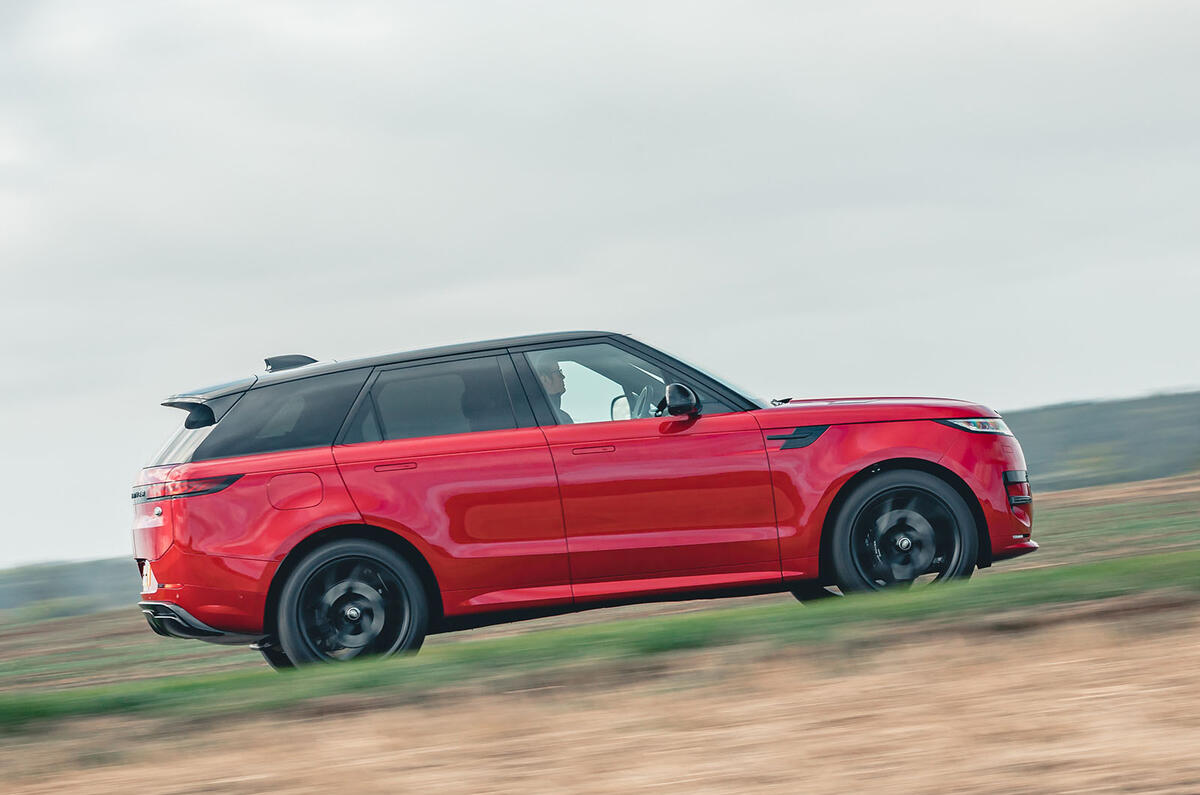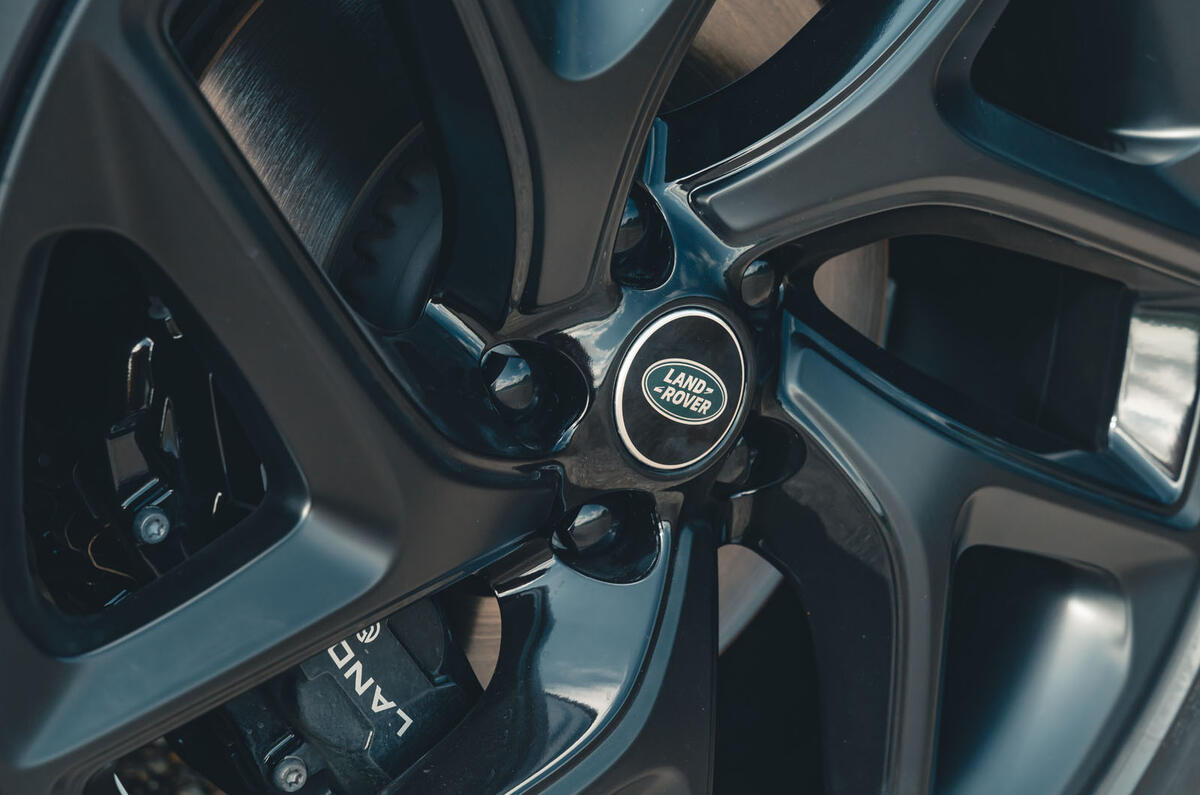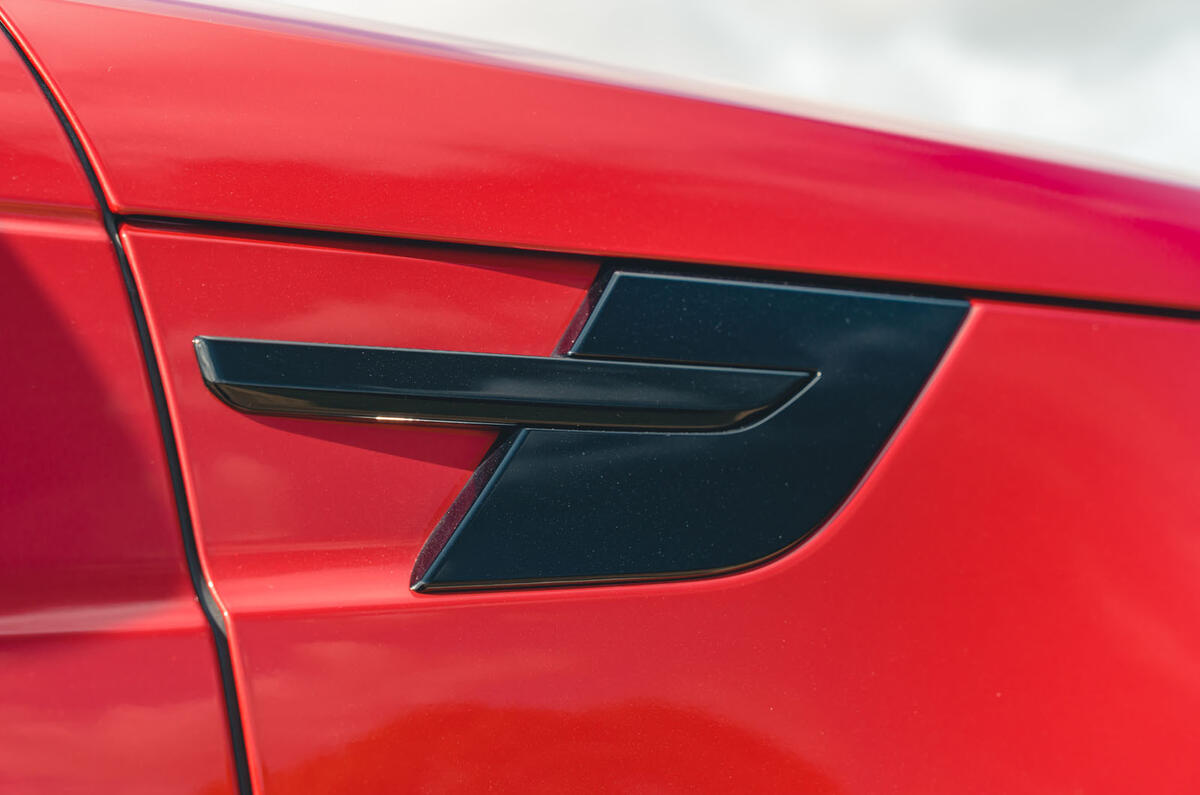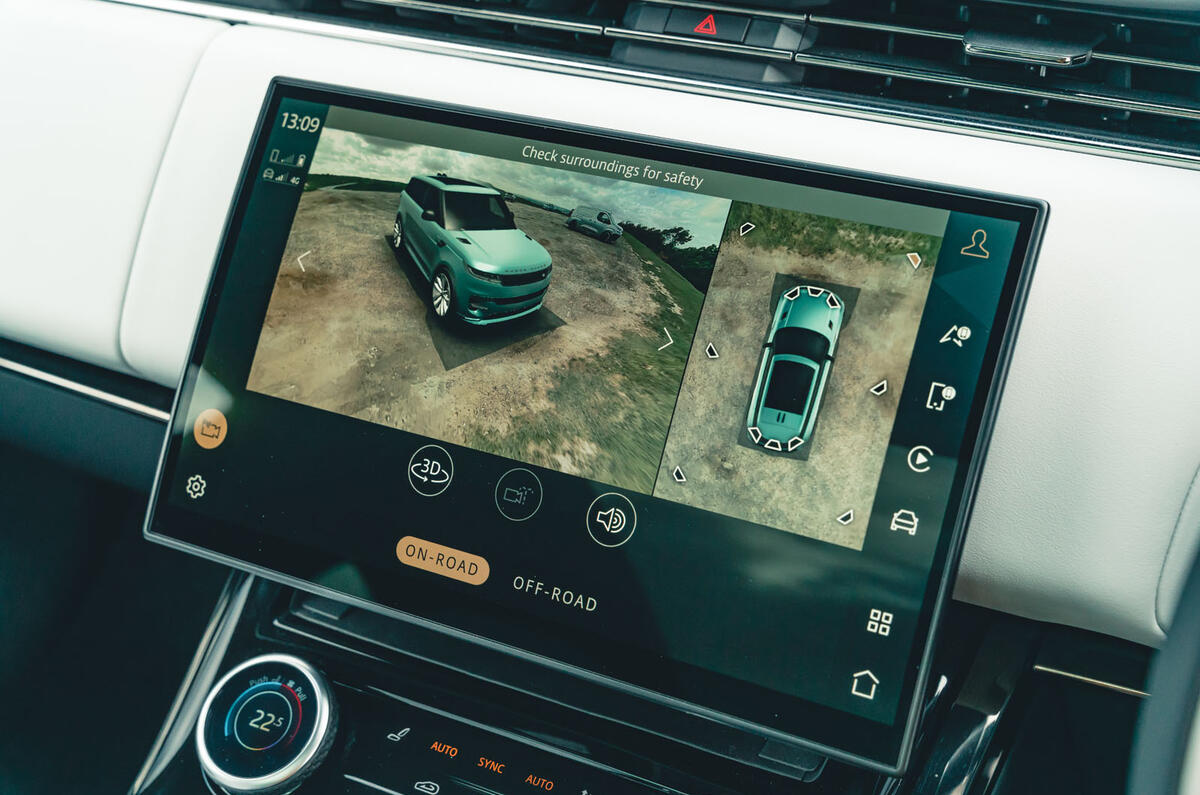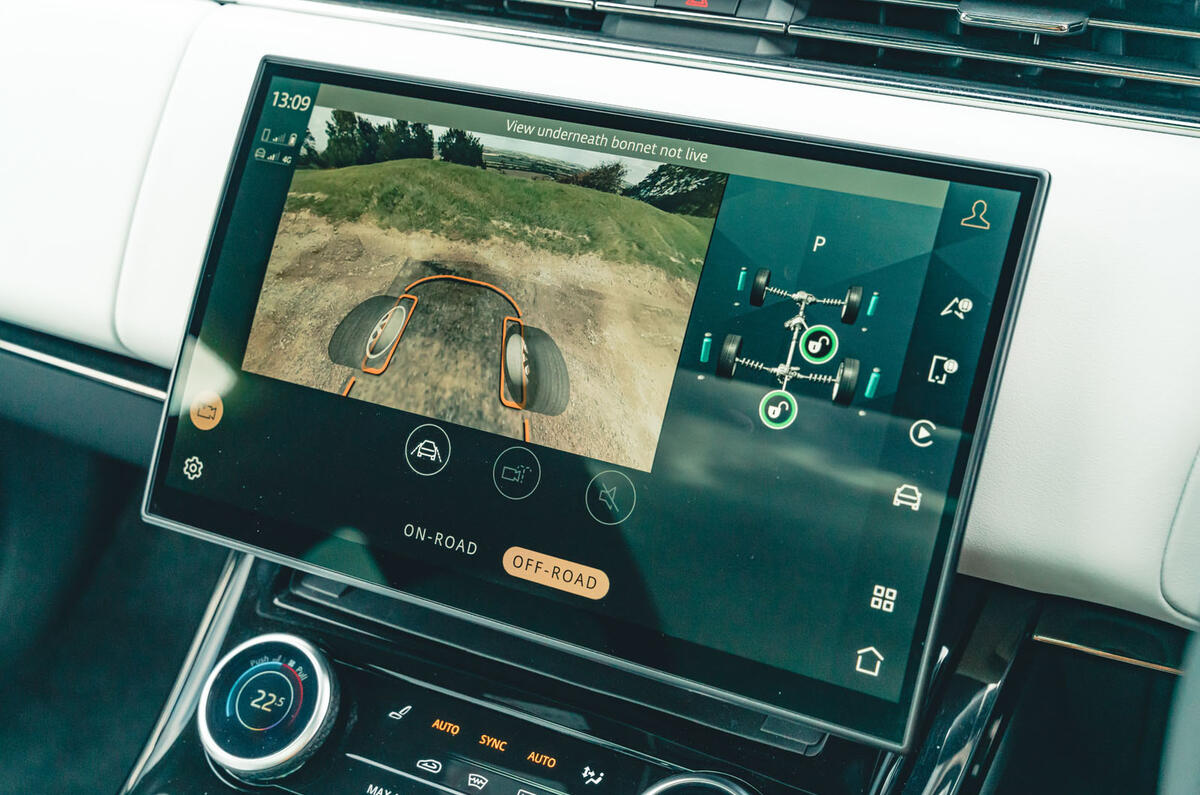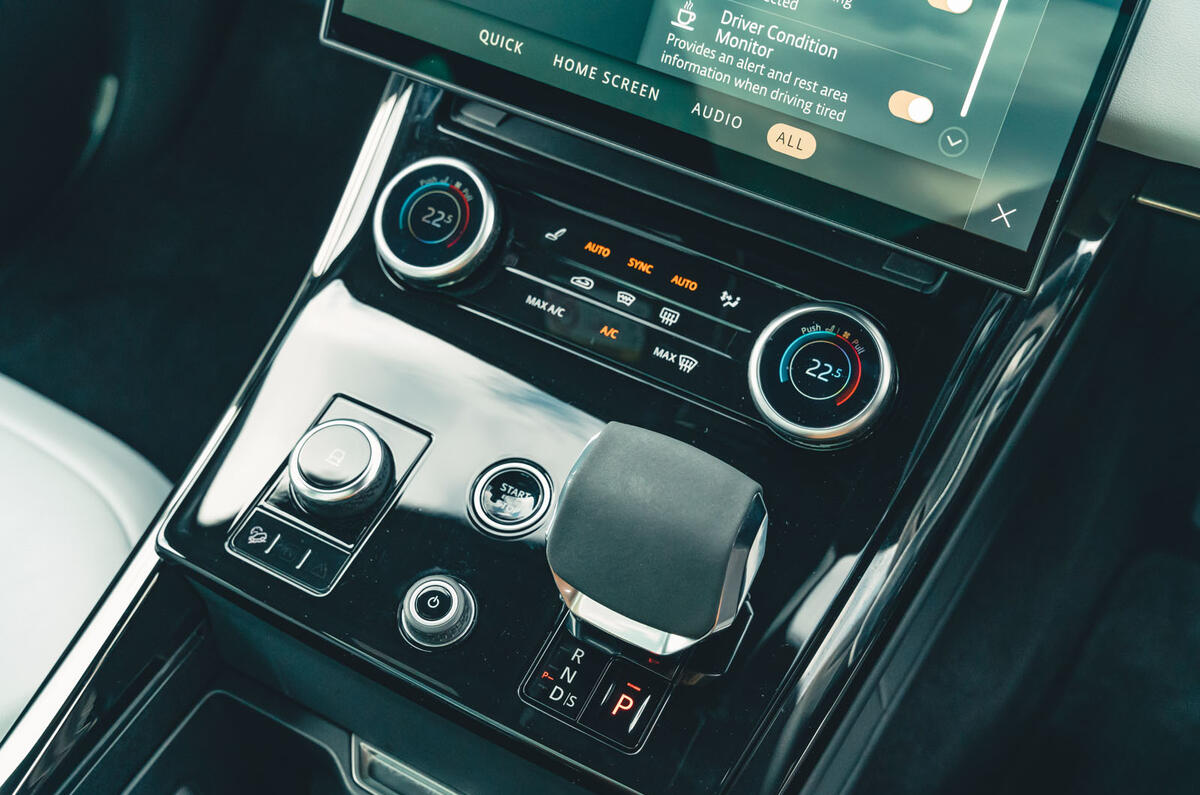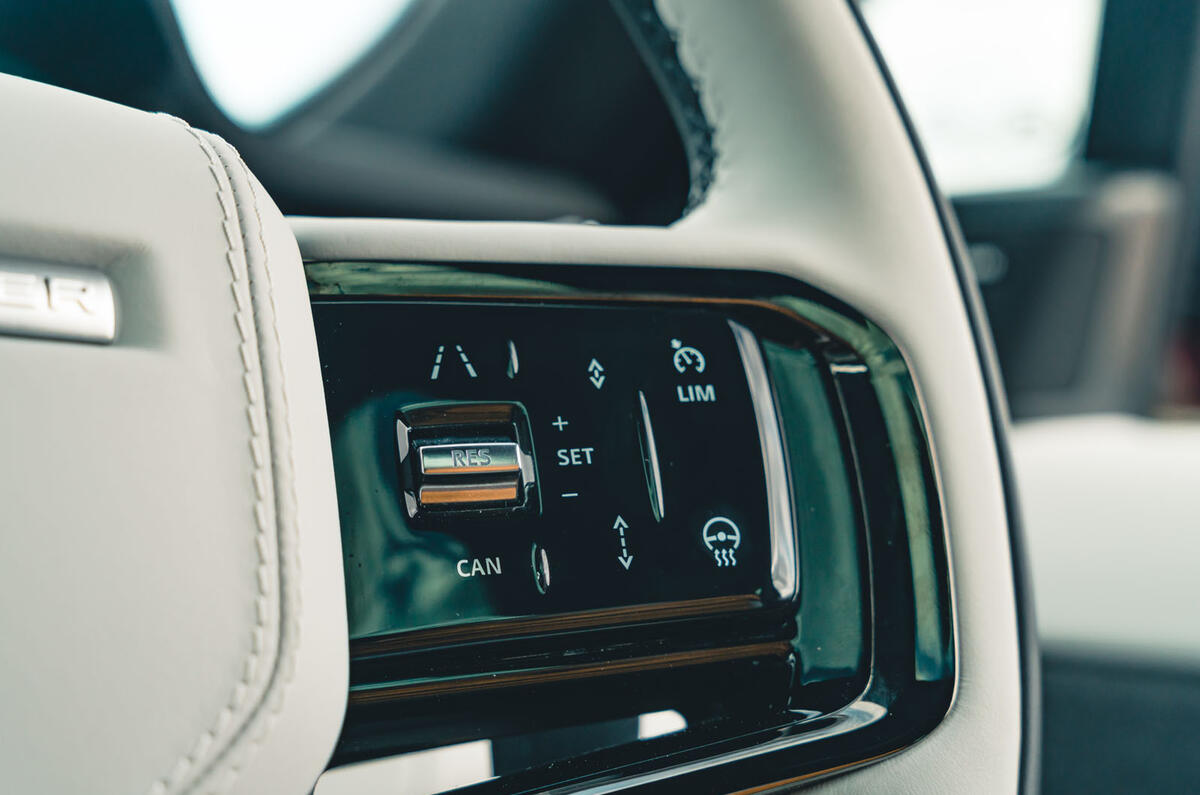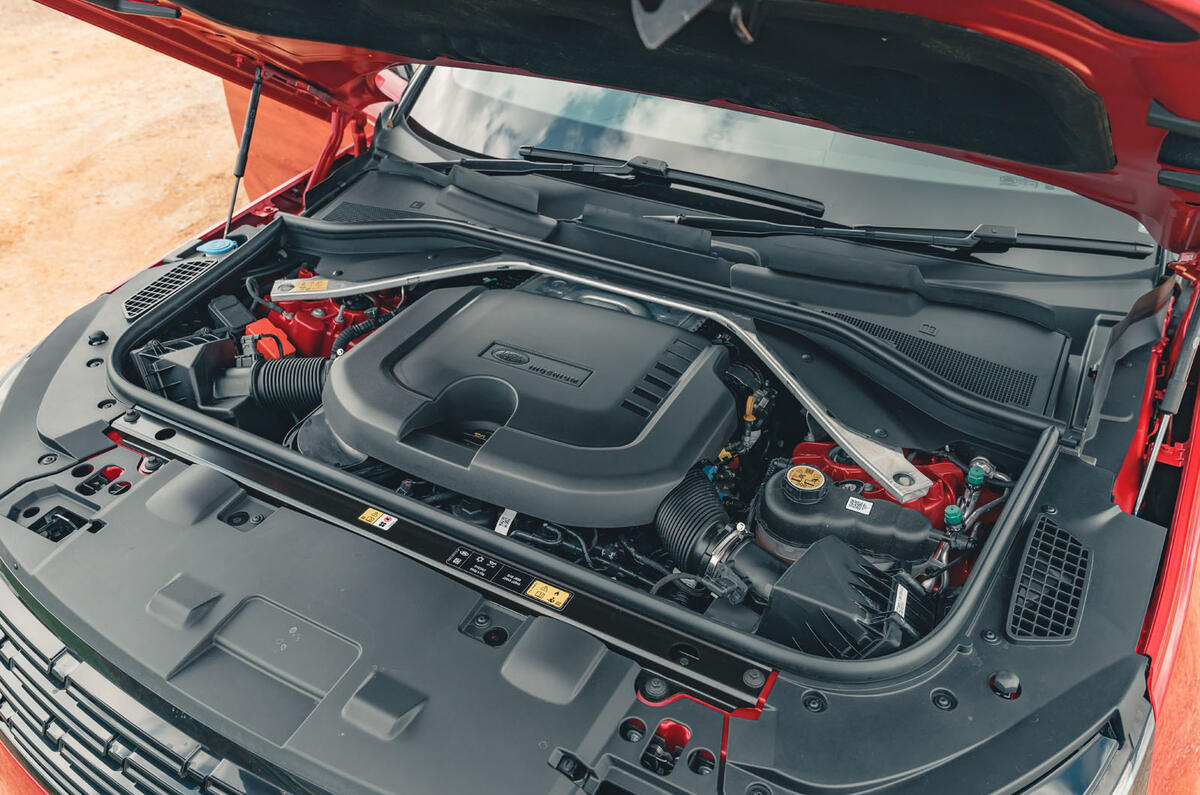Land Rover has now had nearly two decades to perfect the Range Rover Sport’s particular compromise of go-anywhere toughness, use-every-day comfort and drive-with-interest dynamism on the road – and, with some new technical tools to draw on here, it has done a world-class job of polishing that compromise to a very high standard.
Running in Auto driving mode, even lower-order diesel models of this car really feel like they can do it all. They have the inertia and the sheer size that you expect of a Range Rover, and don’t seek to disguise it with overly direct steering, or overly firm suspension, or by working those four-wheel steering, active anti-roll or active differential systems too hard.
When you’re pulling out of narrow side streets or navigating tight roundabouts, there are no surprises. The Sport’s bulk makes its presence felt a little, and you know that it’s yours to manage – although doing so isn’t the slightest problem (and the difference made by that four-wheel steering system to the car’s manoeuvrability in tight areas really is remarkable).
Out of town, though, the car’s capacity to control its considerable mass, to sharpen the precision of its responses and to distinguish itself as something of a driver’s car comes to the fore and lifts it above so many luxury SUVs that are content to be more prosaic to drive. Careful tuning of steering weight, pace and feel, and supple but surprisingly taut and sophisticated damping are the car’s calling cards. While it is still an undemanding vehicle to drive, it is also tactile and at least a little communicative.
So while the Sport has long been a particularly satisfying car in which to bowl along at that engaged but still sensible eight-tenths road pace, the new one has that interested cross-country canter down to a fine art. Instead of fighting with its mass, it lets it breathe over a gently rising surface, keeping it in check but allowing you to easily gauge how much composure is in reserve.


